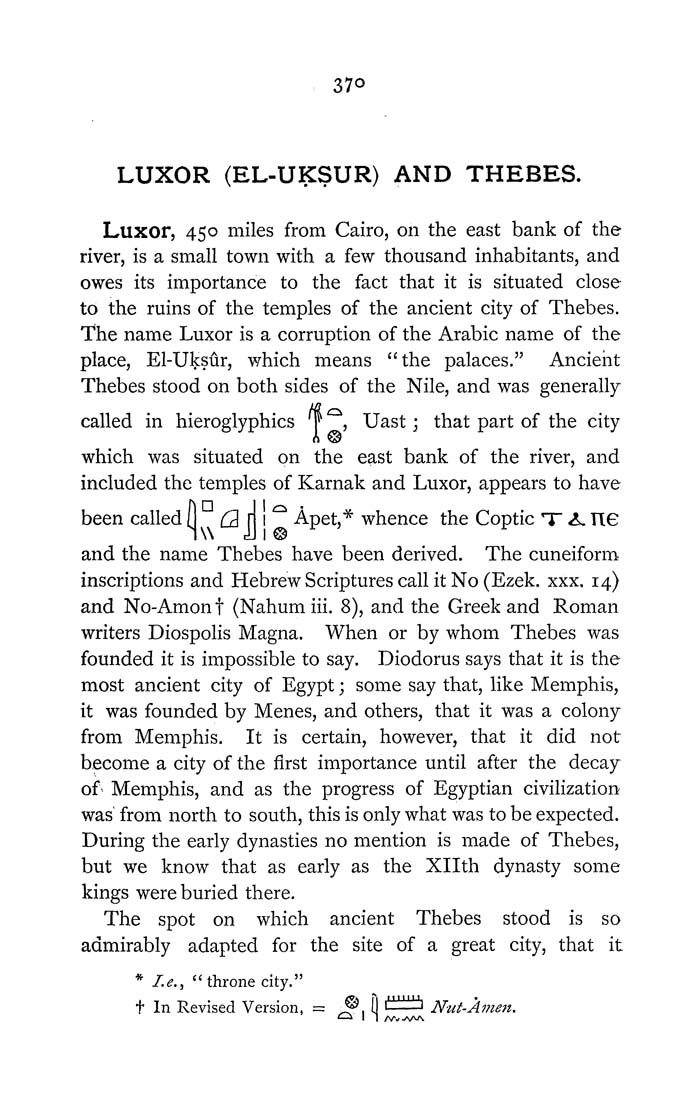370
LUXOR (EL-UKSUR) AND THEBES.
Luxor, 450 miles from Cairo, on the east bank of the
river, is a small town with a few thousand inhabitants, and
owes its importance to the fact that it is situated close
to the ruins of the temples of the ancient city of Thebes.
The name Luxor is a corruption of the Arabic name of the
place, El-Uksur, which means "the palaces." Ancient
Thebes stood on both sides of the Nile, and was generally
called in hieroglyphics T ^, Uast; that part of the city
which was situated on the east bank of the river, and
included the temples of Karnak and Luxor, appears to have
been called (1 £3 [j 1 ^ Apet,"^ whence the Coptic T" ^ Tie
and the name Thebes have been derived. The cuneiform
inscriptions and Hebrew Scriptures call it No (Ezek. xxx. 14)
and No-Amont (Nahum iii. 8), and the Greek and Roman
writers Diospolis Magna. When or by whom Thebes was
founded it is impossible to say. Diodorus says that it is the
most ancient city of Egypt; some say that, like Memphis,
it was founded by Menes, and others, that it was a colony
from Memphis. It is certain, however, that it did not
become a city of the first importance until after the decay
of ^ Memphis, and as the progress of Egyptian civilization
was from north to south, this is only what was to be expected.
During the early dynasties no mention is made of Thebes,
but we know that as early as the Xllth dynasty some
kings were buried there.
The spot on which ancient Thebes stood is so
admirably adapted for the site of a great city, that it
* I.e., *'throne city."
t In Revised Version, = ^ fl 1'"""' Nut-Amen.
|








